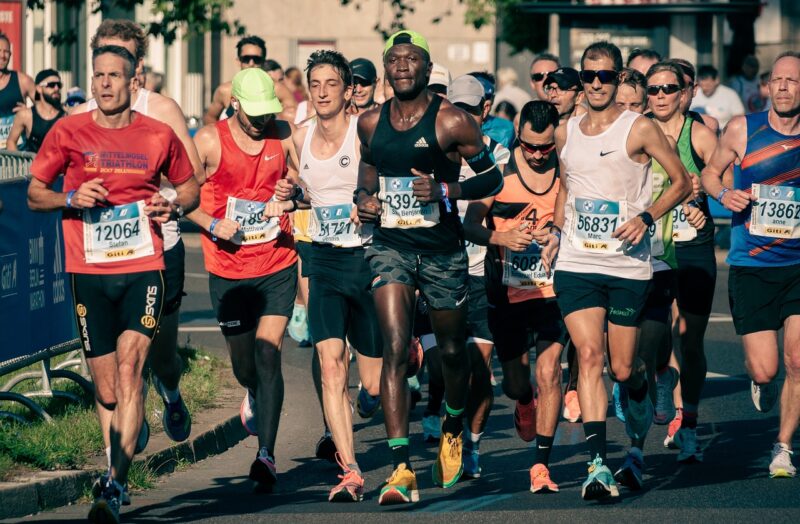How to Train for a Marathon: A Comprehensive Guide for First-Time Runners
November 13, 2024

Training for a marathon can be both exhilarating and intimidating for first-time runners. The journey to 26.2 miles is filled with physical challenges, mental hurdles, and high rewards. Whether you are taking your first steps towards long-distance running or coming from a background of shorter races, this comprehensive guide will equip you with the knowledge and tools you need to train effectively and complete your first marathon.
1. Understanding the Marathon: What to Expect
Running a marathon is not just a physical contest; it is a significant mental challenge as well. Knowing what to expect will help you navigate the training process more effectively.
A marathon stretches for 26.2 miles (42.195 kilometers) and typically lasts anywhere from 2 to 6 hours for most runners. Factors such as weather conditions, terrain, and your training experience can all impact your performance.
Here are some essential topics to consider:
- The Physical Challenge: Training for a marathon requires building endurance, strength, and speed over several months. Expect to experience muscle fatigue and occasional discomfort as you push your limits.
- The Mental Challenge: Maintaining motivation and mental toughness is crucial for enduring long runs and setbacks. Visualization, goal setting, and positive affirmations can help boost your mental resilience.
- The Community Aspect: Joining a running group or community can provide support, motivation, and camaraderie, making training feel less isolating and more enjoyable.
Understanding the marathon experience will prepare you mentally and ensure you are ready for the challenges ahead.
2. Setting Your Goals: Distance, Time, and Personal Motivation
Establishing clear goals is paramount in your training journey. Goals not only encourage accountability, but they also provide direction as you progress.
When setting your marathon goals, consider the following:
- Distance Goal: Completing the marathon distance is often the primary goal for first-time runners. Prioritize building up your long-distance runs progressively to achieve this objective.
- Time Goal: If you have an idea of what time you want to finish in, be realistic and adjust your training plans accordingly. Next, develop a pacing strategy that matches your goals without risking exhaustion.
- Personal Motivation: Understanding why you want to run the marathon will keep you motivated. Whether it’s for fitness, a personal challenge, or raising money for charity, solidifying your ‘why’ can be a powerful motivator through tough training days.
Setting specific, measurable, achievable, relevant, and time-bound (SMART) goals helps clarify your intentions and encourages disciplined training habits.
3. Creating a Training Plan: Your Roadmap to Marathon Success
A structured training plan is essential for preparing for your marathon. It allows you to gradually build mileage and enhance your running performance without risking injury. Here’s how to create a personalized training plan:
- Base Building Phase (Weeks 1-4): Focus on laying the groundwork by running three to four times a week, gradually increasing your weekly mileage. Include one long run each week, starting from 6 to 8 miles, and increase by one mile weekly. Prioritize recovery and listen to your body in this phase.
- Specific Training Phase (Weeks 5-12): Introduce targeted workouts such as interval runs, hill repeats, and tempo runs to build speed and endurance. Aim for four to five runs a week during this phase. Your long runs should now peak at 16 to 20 miles, allowing adequate recovery time between longer sessions.
- Tapering Phase (Weeks 13-16): Gradually reduce your mileage to give your body ample time to recover and rebuild before race day. This phase should peak with your longest run about two to three weeks before the marathon. Keep your intensity up while decreasing volume to ensure your legs are fresh for race day.
Don’t forget the importance of cross-training and rest days! Incorporate strength training, cycling, or swimming to boost overall conditioning while preventing burnout from running alone.
4. Nutrition and Hydration: Fueling Your Body for Success
Proper nutrition and hydration are critical components of marathon training that can affect your performance and recovery. Here’s how to fuel your body effectively:
- Balanced Diet: Incorporate a diet high in carbohydrates, healthy fats, and lean proteins. Carbohydrates are especially essential for endurance athletes as they provide the necessary energy during training and race conditions.
- Hydration Strategies: Proper hydration starts long before race day. Drink plenty of fluids throughout your training, and consider electrolyte drinks for longer runs, particularly when running in the heat.
- Pre-Run and Post-Run Nutrition: Before running, consume easily digestible carbohydrates to fuel your effort. Post-run, prioritize replenishing carbohydrates and proteins within 30 minutes of finishing your run to boost recovery muscle repair.
Experiment with fueling strategies during training, and determine what works best for you to avoid gastrointestinal issues on race day.
5. Injury Prevention and Recovery: Staying on Track
As training intensifies, the risk of injury can increase. Taking preventive measures and promoting recovery can keep you on course for marathon day:
- Listen to Your Body: Pay attention to signals of fatigue or discomfort. It’s better to rest or ease back on training than to push through pain and risk a serious injury.
- Warm-Ups and Cool-Downs: Implement thorough warm-up and cool-down routines to prepare your muscles for activity and aid recovery. Incorporate dynamic stretches before running and static stretches afterward.
- Rest and Recovery Days: Schedule rest days as integral parts of your training plan, allowing your body to heal and rejuvenate. Active recovery such as gentle yoga or light walking can also be beneficial.
Additionally, consider seeking guidance from physical therapists or trainers to assess your form and approach, which may help you avoid potential injuries altogether.
6. Preparing for Race Day: Final Preparations
Race day marks the culmination of your hard work. To ensure you have the best experience:
- Plan Your Race Day Strategy: Decide on your pre-race meal, arrival time, pacing strategy, and hydration routine. Knowing what to expect will ease nerves and help you focus on executing your plan.
- Prepare Your Gear: Lay out your running gear the night before, including shoes, clothes, and any accessories (e.g., gels, watch). Make sure everything is tried and tested during training, ensuring you feel comfortable on race day.
- Mental Strategies: Visualize your race day success, affirm your training efforts, and remind yourself of your goals. Mental preparation plays a significant role in achieving a successful race performance.
Having a well-structured plan will allow you to focus your energy on running strong and enjoying the race.
Conclusion: Embrace the Journey
Training for a marathon is an extraordinary journey that transforms your physical and mental capabilities. While challenges are inevitable, embracing the process can result in unmatched fulfillment. Remember to set clear goals, maintain consistency, and trust your training along the way. The finish line will not only mark the completion of a race but also symbolize your dedication and hard work.
So lace up your running shoes, trust in your training, and prepare to cross that finish line. Happy running!








